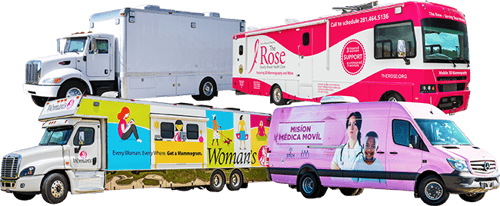
Blog

Social Media Marketing Terminology Breakdown: A to Z
You could argue that in the past decade “social media usage” went from the “cool kids” to all kids, to their parents, to their grandparents, and to just about everyone else in the world.
Consider that in just the last five years, Statista estimates that global social media users skyrocketed from 2.73 billion to 4.89 billion in 2023 – including 91.9 percent of the American population.
Social Media has Changed the Marketing Landscape
All of this adds up to an enormous opportunity for businesses and brands to reach their targeted audiences with social media marketing.
“As we move further into the 21st century, how we communicate and market to consumers is rapidly transforming. The rise of digital technologies and social media platforms has completely changed the communications and marketing landscape. As such, brands must adapt to stay relevant and connect with their target audiences,” writes Stefan Pollack in Business Wire.
It’s also a rapidly evolving landscape where Gen Z social media users are more likely to use TikTok as a search engine than they are to use Google.
“As the pillars of the social media establishment begin to wobble under the weight of new ownership and changing interests, there is an opportunity to start testing out the latest platforms. While TikTok should be on every marketer's radar, Twitch, Reddit, BeReal and Supernova are changing how society is social online. For the right brands, these platforms can help reach new audiences,” says Jonathan Schwartz in Forbes.
Social Media Jargon: Deciphering New Marketing Speak
Not only does social media marketing change at an accelerated pace but so does all the social media jargon that goes along with the medium.
HubSpot’s very comprehensive “Social Media Definitions: The Ultimate Glossary of Terms You Should Know”, first published in 2017, for example, leads with mentions of Tweets, Instagram hashtags, and Facebook event invites, but no TikTok in sight.
In fact, while TikTok is in the current updated glossary, it was not included in 2019 (according to the Wayback Machine), with the article containing such terms as Craigslist, Digg, Flickr, and Meerkat instead.
So, before you run down the hallway to find the college intern for the latest update on social media marketing terminology, check out our A to Z list of some solid social media marketing terms you should know:
A
Algorithm: A set of rules and calculations used by social media platforms to determine which content is shown to users.
A/B Testing: Also known as split testing or bucket testing, A/B testing is a way to compare two versions of a social media marketing strategy to figure out which performs better.
B
Blog: If you are old enough, you might remember that the term blog is derived from “web log”. Today, it’s a content format maintained by businesses and individuals to share specific topics, information, news, features, and other stories.
Brand Advocacy: When satisfied customers promote and recommend a brand on social media.
C
Chatbot: Artificial Intelligence (AI) technology in the form of chatbots simulates human-like conversations with customers. This is an especially hot topic since the debut of ChatGPT in November 2022.
Clickbait: Under social media marketing strategies to avoid, is “clickbait”, which describes the manipulative posting of content, often with misleading headlines, to get users to click.
Click-Through Rate (CTR): The percentage of people who click on a link or ad after seeing it on social media.
Conversion Rate: Assigns a percentage of users who follow through a social media post’s call to action. The higher the conversion rate, the more successful the social media campaign.
Crowdsourcing: Using a large group of social media users to generate content, ideas, services or other actions for a brand campaign.
CTA (Call to Action): The specific action you want a social media user to take or follow in your specific marketing campaign.
D
Dark Post: Targeted social media ads that only appear in the feeds of certain users and not in the advertiser’s overall timeline.
Direct Message (DM): A private message sent on social media platforms between users.
E
Engagement or Engagement Rate: The level of interaction and activity generated by social media content, such as likes, comments, and shares.
Ephemeral Content: Social media content that disappears after a specific period of time.
F
Feed: A stream of content that is displayed to a user on a social media platform.
Follower: An individual who subscribes to or follows a social media account to see its updates.
G
Geotagging: Adding a location to a social media post to provide context or target a specific audience.
H
Handle: Unique username used on social media accounts such as Twitter can be called your “handle”. Typically, what follows the @ symbol.
Hashtag: A word or phrase preceded by a "#" symbol used to categorize and organize social media content.
I
Impressions: The number of times your content has been shown on the feeds of social media users. Engagement is not necessary for an impression to be logged.
Influencer: A person with a significant social media following who can impact their audience's purchasing decisions.
J
Joining the Conversation: Actively participating in discussions and trends on social media to increase brand visibility.
K
Key Performance Indicator (KPI): Metrics used to evaluate the success of social media marketing campaigns, such as reach, engagement, and conversions.
L
Like: A positive interaction on social media, indicating that a user appreciates or supports a post.
Live Streaming: The streaming of social media content live or in real-time.
M
Meme: Ask someone how to pronounce this word and you might wind up in an argument (pro tip: it rhymes with “cream”)! A meme is an image, video, or other social media content, usually humorous in nature, that is copied and shared across social media platforms.
Mention: Tagging or referencing another user's username in a social media post.
N
Native Advertising: Presenting paid content users in such a manner that it appears to look organic.
News Feed: The continuously updated stream of content displayed on social media platforms, customized for each user.
O
Organic Reach: The number of people who see a social media post without any paid promotion.
P
Pay Per Click (PPC): A form of paid advertising where advertisers pay a fee for each time a user clicks on the ad.
Persona: A fictional representation of a brand's target audience, used to create targeted content and campaigns.
Q
QR Code: A scannable code that allows users to quickly access information or content, often used in social media marketing campaigns.
R
Retargeting: Displaying ads to users who have previously interacted with a brand on social media or visited its website.
S
Share: When a user reposts or forwards a piece of content to their own social media network.
Social Media ROI: The return on investment (ROI) that your social media marketing campaigns are generating – usually a percentage calculation used to determine the return on investment.
Story: A collection of images or short videos posted by users or businesses on social media platforms that usually disappear after 24 hours.
T
Targeting: Most social media campaigns “target” a specific audience based on factors such as age, location, gender, and other demographics.
Traffic: Refers to all user visits to a website or apps coming from all social media networks.
Trending: Topics or hashtags that are currently popular and widely discussed on social media.
U
User-Generated Content (UGC): Content created and shared by users about a brand or its products on social media.
V
Viral: When a piece of content spreads rapidly and widely across social media networks.
W
Word-of-Mouth Marketing: When people share positive recommendations or opinions about a brand on social media, influencing others' buying decisions.
X
Cross-Platform: Okay, you caught us … we are “cheating” a bit on this one, but an X is a cross! Cross-platform is the use of multiple social media platforms in marketing efforts to reach a wider audience.
Y
YouTube: A popular video-sharing platform owned by Google, often used for social media marketing.
Z
Zoom In: Focusing on specific social media marketing strategies and tactics to improve results.
Subscribe to email updates
Recent posts

Related Articles

Topics

Topics

Topics






